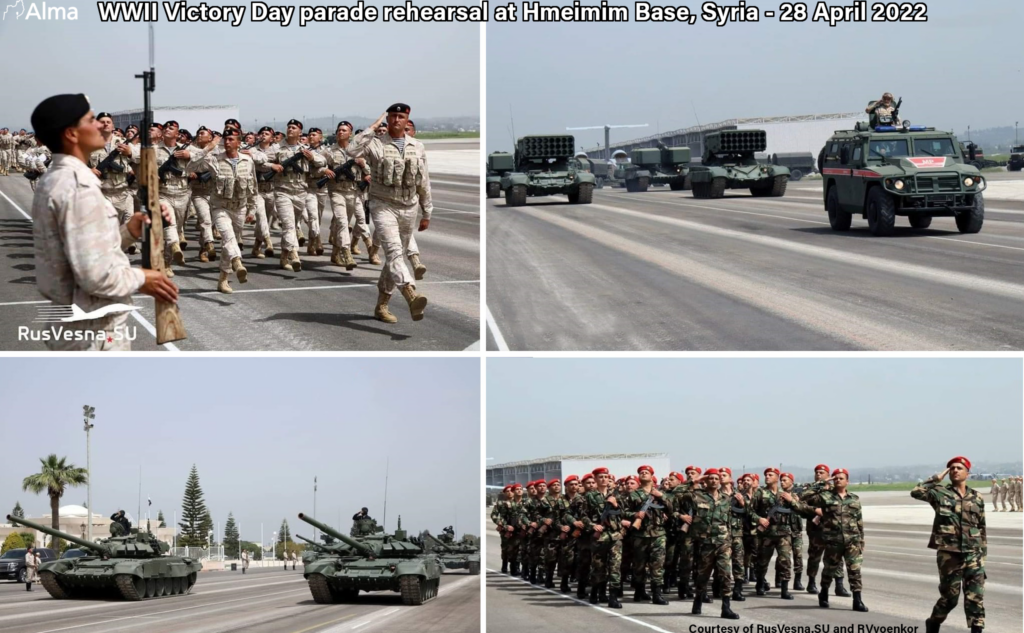Amid the ongoing war between Hamas and Israel, alongside the limited clash between Israel and Hezbollah in the northern arena, Russia is taking a number of steps in Syria that reflect its global face-off against the United States, and its increasing dependence on Iran for its firepower (Mainly missiles and unmanned aerial vehicles).
Russia seems to view Israel as an ‘American proxy’ and as such, has adopted a deeply adversarial stance towards Jerusalem since the October 7 mass murder attack by Hamas. This has been expressed through the hosting of Hamas delegations in Moscow, the releasing of a series of deeply biased anti-Israel diplomatic statements, and the taking of steps – so far symbolic – in Syria designed to solidify Moscow’s role as an ally of Iran and Syria and a rival to the United States and to American attempts to engineer a U.S.-led regional and global order.
As such, it is important to comprehend these dynamics at two levels simultaneously: The regional and global levels.
Globally, Russia, China, and the United States are locked in a tectonic power struggle, which contains within it the potential for global conflict.
At the regional level, the attack by Hamas, a pawn of Iran, on Israel, set off a chain reaction of events that could impact both the regional clash between Israel, the Sunni powers, and Iran, and the global conflict between the U.S. and Russia.
In this context, on February 12, Ukraine’s Main Directorate of Intelligence (GUR) announced that Russian operators of Iranian-made drones are training in Syria.
According to the statement, the training is being conducted by Hezbollah Iran’s Islamic Revolutionary Guard Corps (IRGC) on the premises of Syria’s Shayrat airbase in Homs (a site that has been struck a number of times in the past). We are aware of a Russian presence on site with an emphasis on a helicopter fleet and special forces.
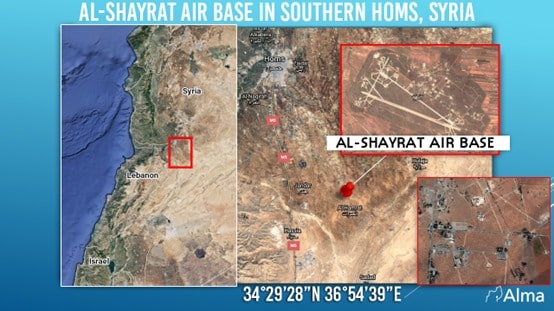
According to the GUR, Russian military personnel practiced operating Iranian-made Shahed 136 and Ababil 3 unmanned aerial vehicles, as well as the Raad (thunder) Iranian-made air defense system.
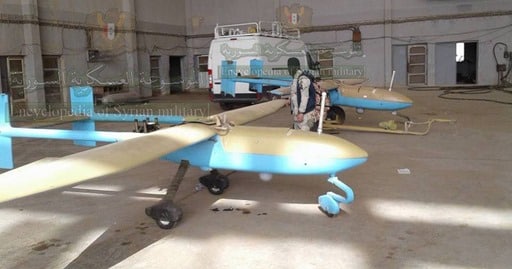
The training was reportedly led by a Hezbollah commander Kamal Abu Sadiq, who specializes in UAV manufacturing and maintenance. As of May 2022, we are aware of activities by a Russian UAV fleet, primarily against ISIS forces in the eastern Syrian desert, out of the T4 Base, between Palmyra and Homs.
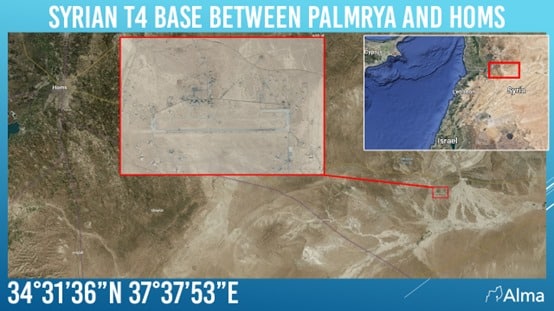


The GUR also said that Russia has plans to deploy Syrian mercenaries to fight in Ukraine after they complete training at Shayrat airbase.
Ukraine, meanwhile, continues to shoot down many Iranian-made Shahed drones, indicating Russia’s wide use of the Iran-produced UAVs.
On January 18 2024, the Russian Ministry of Defense announced the start of military air patrols along the disengagement line between Syria and the Golan Heights,
The Russian TASS state-owned media outlet quoted the Deputy Head of the Russian Center for Reconciliation, which is affiliated with the Russian Ministry of Defense, Admiral Vadim Kulit, as saying that the Russian air forces began air patrols along the Bravo Line that divides the Golan Heights between Syria and Israel, in order “to monitor the situation.”
This is not the first time that Russian aircraft are conducting aerial patrols near the border with Israel. On January 24 2022, the Russians held joint aerial patrols with the Syria air force over southern Syria adjacent to Israel.
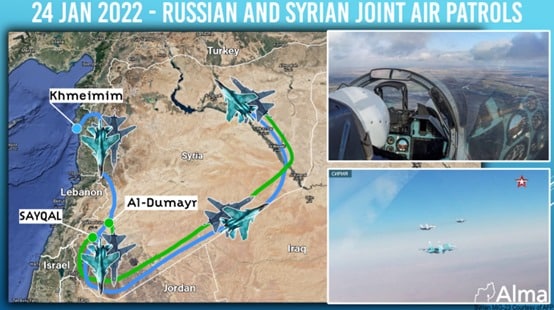
Admiral Kulit also noted what he described as a “violation of Syria’s airspace” by an American unmanned aerial vehicle in the Al-Tanf area, in southeast Syria, where the U.S. maintains a base, and over which Russia has conduced oversight surveillance on dozens of occasions throughout 2023.
On January 3 2024, Admiral Kulit said Russia established two military points in southern Syria, with units of the Russian military police (which are actually an infantry force for all intents and purposes) sent to “monitor the ceasefire” between Israel and Syria. One Russian outpost is located at Tel Masharah, Southeast of Khan Arnabeh (see photo).
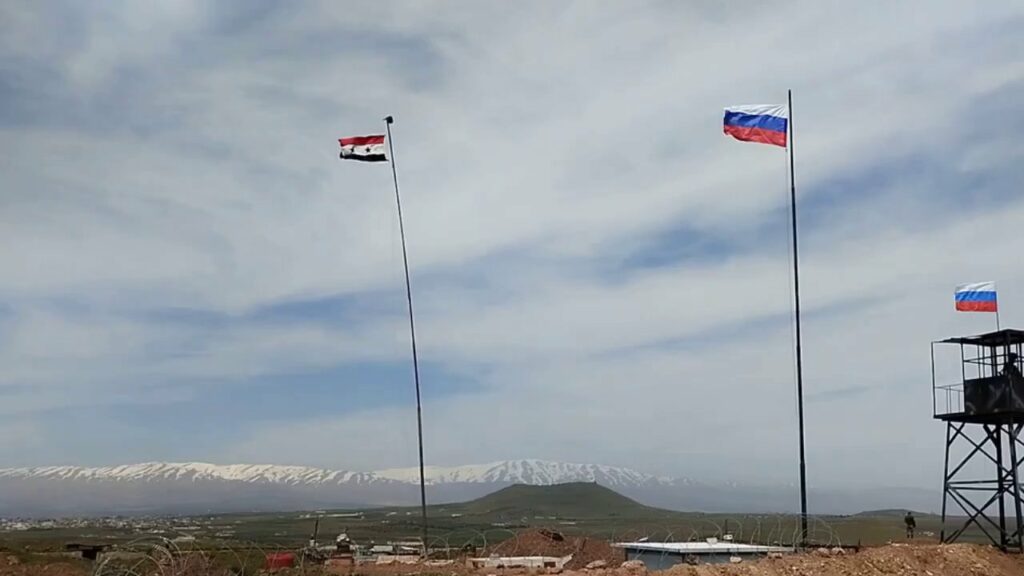
In reality, southern Syria is used by the Iranian-Hezbollah axis to set up attack positions against Israel, both through the “Southern Command” unit, a sectoral unit of Hezbollah in charge of southern Syria, which builds infrastructure for Hezbollah activity in the area, and the “Golan File,” which as a Hezbollah proxy and recruits local Syrian terrorists to gather intelligence and conduct attacks against Israel.
On March 12, the IDF struck two Syrian army positions where Iranian-backed Hezbollah terrorists were operating, a reminder of the activities of Hezbollah in the area.

Ultimately, these dynamics reflect an interplay between regional and global confrontations. Iran and Russia are engaged in their closest ever military and weapons-supply cooperation in their history.
Russia is building thousands of Iranian UAVs on its soil, with Iranian instructors reportedly in Russia helping to set up a UAV factory in Tatarstan, Russia, thereby shortening Russia’s weapons supply chain process. This creates Russia dependency on Iran, which can be described as being unprecedented.
Meanwhile, America’s adversaries are encouraged by the fact that the United States is busy supplying Ukraine and Israel with weapons, as well as to South Korea, threatened by North Korea.
Could this create a temptation for China to make a move on Taiwan, which would also need U.S. support?
Could the U.S. actively nourish the needs of four allies under fire at the same time, without compromising on the America’s own readiness?
All of this is occurring as European NATO members are waking up to the fact that their ground forces don’t add up to more than of an Israeli armored division.
In this context, Russia is now revealing its cards through its actions – the hosting of Hamas, defending Hamas’s legitimacy, and through its actions in Syria.
At the same time, it is important to stress that Russia is not focused militarily on Syria, but rather on Ukraine, and the flight patrols over the Bravo Line are more a kind of theater.
Beyond these theatrics, the bigger danger is the potential change that may occur in Russia’s position regarding Iranian freedom of action in Syria – a core Iranian interest, since the Islamic Republic is frustrated by Israel’s ongoing campaign to strike at its attempt to build a war machine in Syria.
So far, Israel’s campaign against Iran – Hezbollah in Syria seems to be progressing without any restrictions. Russia still maintains an S-400 air defense system in Syria – to defend its own assets, after having removed S-300 systems from Syria in 2022 to help it deal with the Ukrainian arena.
As such, Russia’s presence in Syria represents the interplay of the regional and the global confrontations underway.
Ultimately, Russia’s goal in the Middle East is to see America weakened and pushed out, and for its foothold in Syria to return to its former strength if and when the demands from the war in Ukraine would allow it to do so. When Moscow saw American soldiers killed in Jordan in February this year by an Iran-backed Shi’ite Iraqi militia, it did not likely shed a tear.

